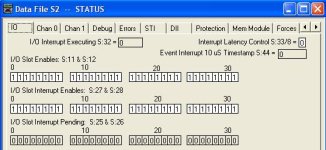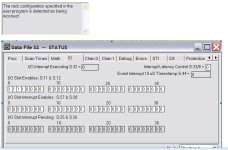sthays10
Member
This is my first project using a SLC 5/05 processor, and I'm having some trouble setting up a simulator.
We have a single processor using 3 racks - two 13 slot racks, one seven slot racks, with mainly discrete inputs and outputs - being installed at our customer's site. In the office, I have the processor, a power supply, a couple of basic modules, and a 7-slot rack.
I am in the office, trying to set up a simulator for my HMI. I can connect and download to the processor, but I can't run the program because of an I/O mismatch. I know in Logix 5000 there is an option to disable the I/O cards, but I can't find the option in Logix 500.
How do I bypass the I/O Mismatch?
Thanks,
Steve
We have a single processor using 3 racks - two 13 slot racks, one seven slot racks, with mainly discrete inputs and outputs - being installed at our customer's site. In the office, I have the processor, a power supply, a couple of basic modules, and a 7-slot rack.
I am in the office, trying to set up a simulator for my HMI. I can connect and download to the processor, but I can't run the program because of an I/O mismatch. I know in Logix 5000 there is an option to disable the I/O cards, but I can't find the option in Logix 500.
How do I bypass the I/O Mismatch?
Thanks,
Steve




